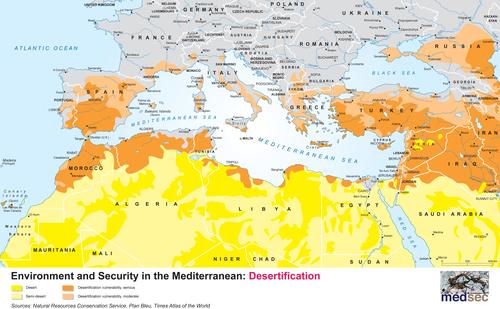Desertification
Desertification, as the name implies, relates to the growing amount of the world's land that is turning into desert. About 250 million people are directly affected by desertification and a billion people are affected indirectly.
There are significant areas of natural 'climatic' deserts around the world and many of them already exist for thousands of years, including the Sahara in North Africa, the Kalahari in southern Africa, the Atacama in South America, large parts of Australia and the Sonoran desert in southern United States and Mexico. Desertification is now spreading far beyond the climatic deserts into areas of vulnerable soils under a prevailing dry climate. It is a process that does not only occur in hyper-arid areas, but also in arid, semi-arid and sub-humid zones, which have a ratio of rainfall: evapotranspiration of <0.05 to 0.70, where evapotranspiration exceeds incoming precipitation.
The areas affected by desertification have low rainfall, long dry periods or seasons, sparse vegetation cover, very thin loose soils, and surface deposits that are highly mobile. Under these circumstances, the soil cover is prone to desiccation and easily erodible by wind. There is now much evidence that human activity is triggering increasing desertification. In these marginal areas, agricultural production is much more difficult to achieve and it is difficult to avoid damage to the soils. The human impacts are a function of population density, cultural traditions, land tenure and land management and other socio-economic and political factors. Although climate and soil type are important in determining the severity and rate of desertification it is often ignorance in failing to match the use and management of the land with the prevailing climate that leads to the removal of the soil and irreparable damage.
(Soil-Net 2016e)
